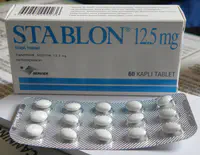The Shocking Role of Methamphetamine in Rural Overdose Deaths
A sinister spread of highly potent synthetic opioids like fentanyl into the meth supply is taking a devastating, often lethal toll on individuals who use drugs without having any idea they’re using a meth/fentanyl hybrid.

If you’ve heard news reports about a spike in meth-related death, the culprit behind most deaths is a fentanyl-laced methamphetamine supply. That is important information because it shows how even drugs that people did not traditionally associate with overdoses are now causing mass death events. In short, as illicit fentanyl and other highly potent synthetic opioids spread across the U.S., all types of drug use can now easily produce a fatal overdose, hence the dire need for those addicted to drugs to seek help at qualified treatment facilities as soon as possible.
New Findings Raise Alarm
In rural America, methamphetamine is now deadly, according to research published by the Addiction Medicine department at the Oregon Health & Science University in Portland. The researchers studied information and surveyed more than 3,000 participants in the Rural Opioid Initiative program between 2018 and 2020. All 3,000 were individuals who lived in rural parts of Illinois, Kentucky, Massachusetts, New Hampshire, North Carolina, Ohio, Oregon, West Virginia, Wisconsin, and Vermont.
According to the survey results, 22% of the 3,000 individuals who admitted to using both meth and opioids had experienced (and survived) an overdose in the past six months. Conversely, about 14% of those who had just used opioids experienced an overdose, and only 6% who had just used meth experienced an overdose.1
From these findings, the researchers extrapolated that rural drug users are almost four times more likely to experience an overdose if they use meth and opioids than if they use meth by itself. The findings also indicated that addicts are almost twice as likely to experience an overdose if they use meth and opioids than if they use an opioid by itself.
“Naloxone will not treat methamphetamine use; however, so much of the methamphetamine supply is now laced with fentanyl that if somebody has an overdose, they should always get naloxone, because chances are the drug you thought they were taking also has the potent opioid in it.”
Sadly, meth-related overdoses are becoming increasingly fatal. A big part of that is because other individuals nearby who spot the overdose do not recognize that the addict is overdosing on opioids too, and therefore do not apply naloxone to the victim. That’s why lead researcher Dr. Todd Korthuis said meth overdoses should always be treated as opioid overdoses, and responders should always give naloxone to someone exhibiting signs of any type of drug overdose. In Dr. Korthuis’s own words, “Naloxone will not treat methamphetamine use; however, so much of the methamphetamine supply is now laced with fentanyl that if somebody has an overdose, they should always get naloxone, because chances are the drug you thought they were taking also has the potent opioid in it.”2
Overdose Numbers Show Drug-Related Fatalities Occur in All States and With All Drugs
The misconception that some drugs are “less dangerous” than others is just that, a misconception. While many addicts may have historically tried to avoid opioids (and use stimulants instead), the findings cited above and data from the National Institute on Drug Abuse show that stimulants like meth and cocaine often have opioids in them.3
To put the numbers into context, methamphetamine-related deaths in 2009 came in at about 1,500. But in 2019, that number increased by more than ten-fold, with 16,500 Americans dying from meth-related deaths in 2019. The big difference is that most of the meth-related deaths in 2009 were caused by just meth alone, but most of the meth-related deaths in 2019 were caused by meth mixed with powerful synthetic opioids like fentanyl.
Further, a similar crisis has developed with cocaine. Barely more than 1,000 Americans were dying from cocaine abuse each year in the early-2000s. But in recent years, more than 15,000 Americans have lost their lives to cocaine overdoses annually, and the vast majority of those overdoses also involved synthetic opioids that had been mixed into the cocaine supply.
Lack of Access to Treatment is Now a Fatal Problem

The researchers went on to show how lack of access to treatment is a complicating factor that sadly makes addiction a death sentence for some addicts. According to the findings, 40% of rural respondents who suffered from addiction said they couldn’t get treatment, and at least 44% who suffered from opioid and meth addiction said they couldn’t. The authors also mentioned that several rehab centers that treat opioid addiction do not have sufficient tools to also treat meth addiction. That makes it more difficult for opioid-and-meth addicts to get help, even as their very addiction puts them at a much higher risk of dying.
These findings shed light on a much larger problem plaguing America, that of polysubstance abuse. Linda Richter, vice president for prevention research and analysis at the Partnership to End Addiction, pointed out how rehab centers must be made available to addicts in rural America, and they must have the capacity to treat people who are addicted to more than one drug. In Richter’s own words, “This study confirms that polysubstance use is prevalent among people who use drugs and that our nation’s tendency to tackle one drug problem at a time fails to take this reality into account, with disastrous consequences.” As long as addicts have nowhere to go to get help, overdose deaths will continue to stack up.
Treatment Is the Answer for Addicts in Rural and Urban America
Drug treatment works, but it has to be made accessible to all who need it. Further, public health leaders and policymakers must address the social problems that often underlie addiction. Prevention works too, and it is far easier to help people before they become addicted.
Linda Richter at the Partnership to End Addiction also spoke to this point. “Prevention efforts that target the underlying social and structural determinants of drug use and addiction, including inadequate and unstable employment, housing, child care, health care, and neighborhood safety, are the most likely to be successful. We also must do more to expand the treatment workforce, by making addiction treatment part of mainstream health care and incentivizing qualified providers to serve rural communities and marginalized populations. To address the immediate overdose problem, we need to boost public awareness to inform people who use methamphetamine and opioids of the high risk that their drug can be laced with fentanyl.” Each of those points is spot on. And their conclusion is that addressing overdoses in rural America is a problem whose solution must be shared by all community members.
Addiction is a life-threatening crisis, no matter what substance an addict uses. That’s why it’s so important for those struggling with drug and alcohol abuse to get help. If you know someone using mind-altering substances, please help them find and enter a residential addiction treatment center today. Don’t wait until it is too late.
Sources:
-
JAMA. “Association of Methamphetamine and Opioid Use With Nonfatal Overdose in Rural Communities.” Journal of the American Medical Administration, 2022. jamanetwork.com ↩︎
-
USNews. “Meth Plays Big Role in Drug O.D.s in Rural America.” U.S. News, 2022. usnews.com ↩︎
-
NIDA. “Rising Stimulant Deaths Show that We Face More than Just an Opioid Crisis.” National Institute on Drug Abuse, 2020. nida.nih.gov ↩︎







 ®
®